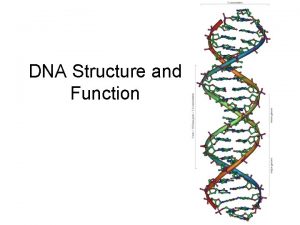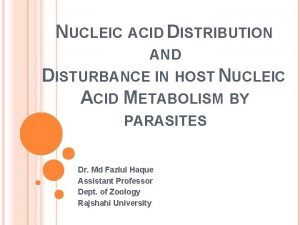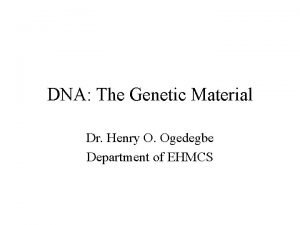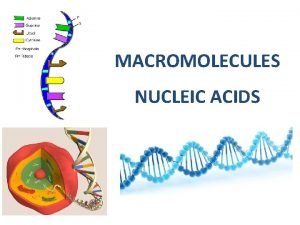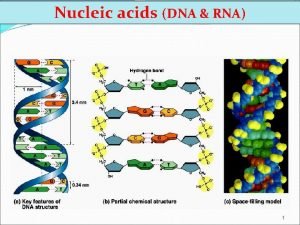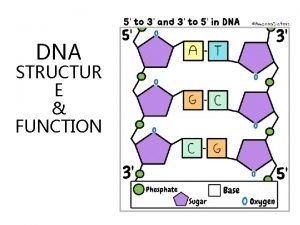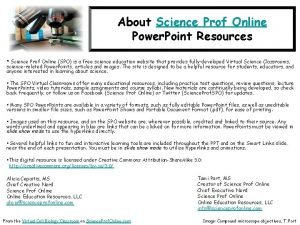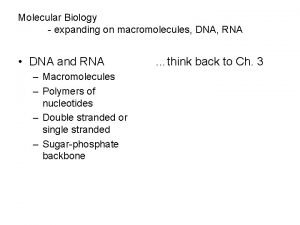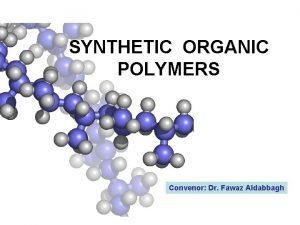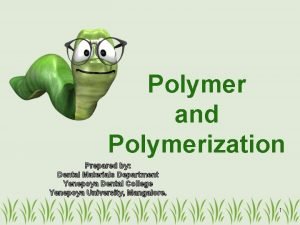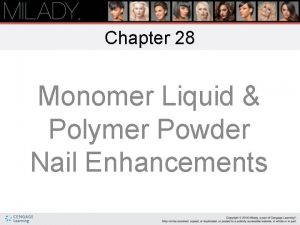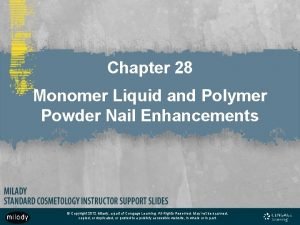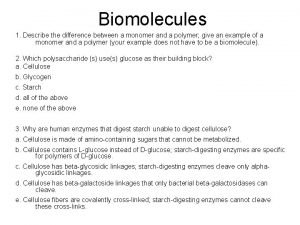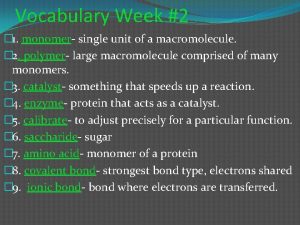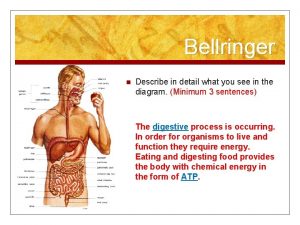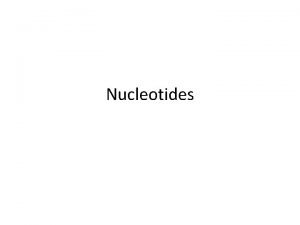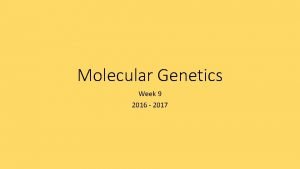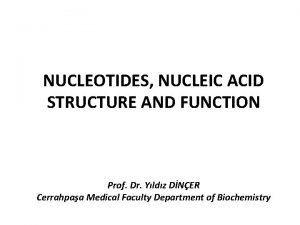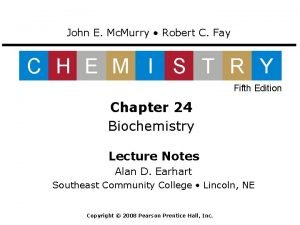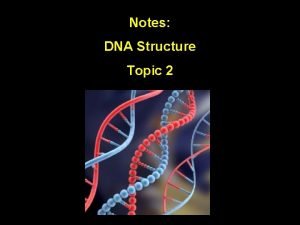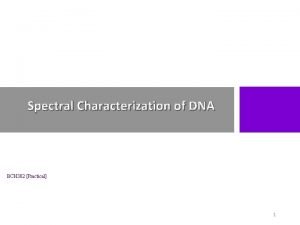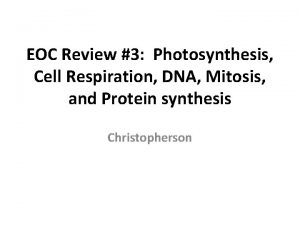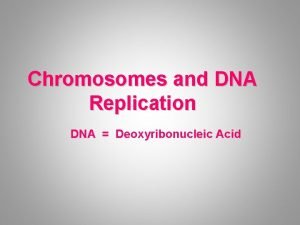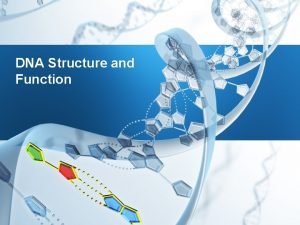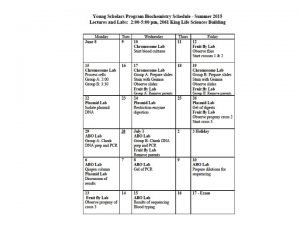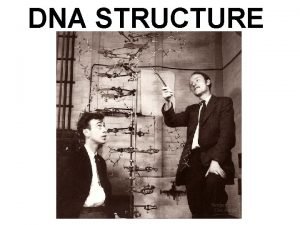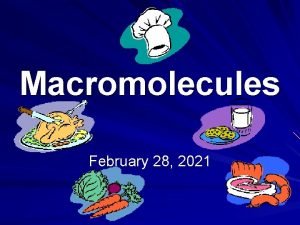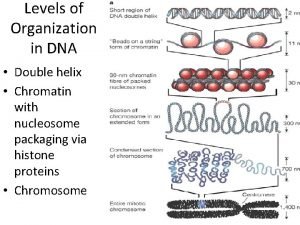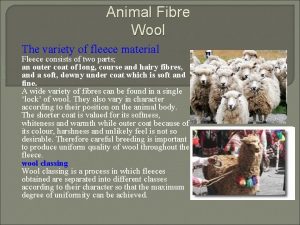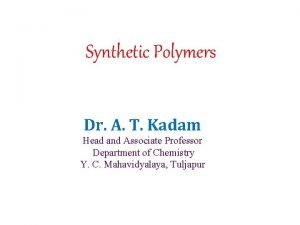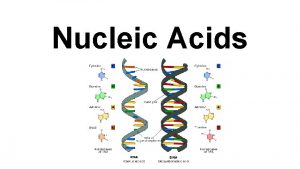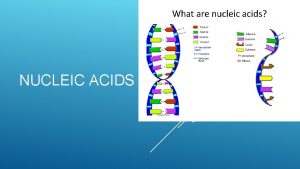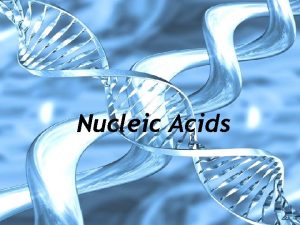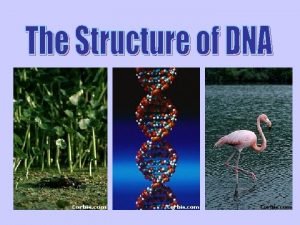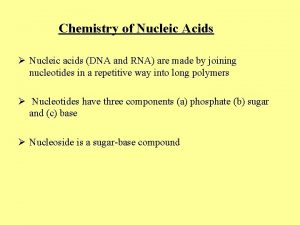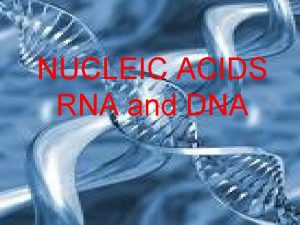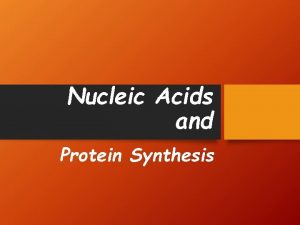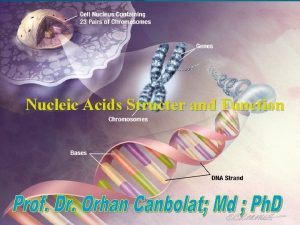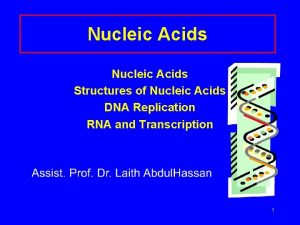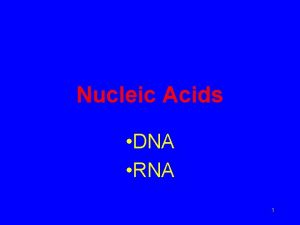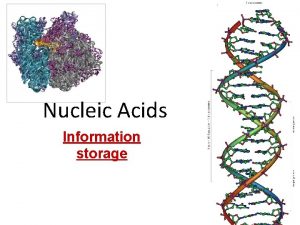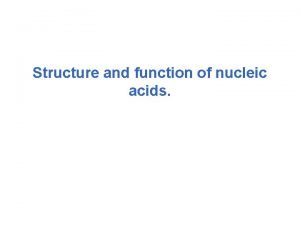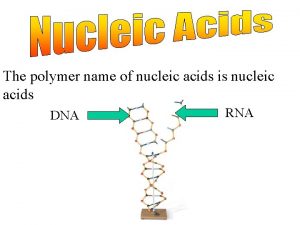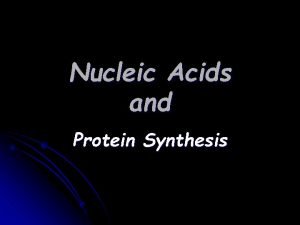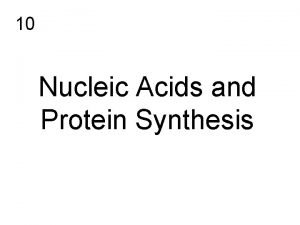DNA Structure and Function Nucleic Acids polymer Monomer









































- Slides: 41

DNA Structure and Function

Nucleic Acids (polymer) • Monomer = nucleotides, the building blocks of nucleic acids • Structure = three parts: sugar, phosphate, and nitrogencontaining base

Sugar-Phosphate Backbone • Nucleotides connected together with a covalent bond. • Alternating sugars and phosphates

Nucleic Acids • DNA: Four bases: o o Adenine (A) Guanine (G) Thymine (T) Cytosine (C) • Sugar is deoxyribose • Double stranded • RNA: Four bases: o o Adenine (A) Guanine (G) Uracil (U, replaces T) Cytosine (C) • Sugar is ribose • Single stranded

Nitrogenous Bases • DNA -Four bases: o o Adenine (A) Guanine (G) Thymine (T) Cytosine (C) • Memory trick, pyrimidines have a “y” in the name

Base Pairing • DNA is 2 strands (molecules) held together by H-bonds • Bases form hydrogen bonds with each other – A pairs with T (& vc vs) – C pairs with G (& vc vs)

DNA Animation: Campbell Ch 10 – DNA Double Helix Where are the H-bonds?

DNA Structure • The bonds between which 2 bases are stronger G&C or A&T? • H-bonds are very week, break & reform • W/ thousands of bases & thousands of bonds, DNA is held together

DNA • DNA is a polar molecule • It also has a negative charge

Griffith’s Experiment • 1928 • Two strains of bacteria – R – harmless (1) – S – deadly (2) • Heat killed Strain S is also harmless (3) • Something from heat killed Strain S makes Strain R deadly (4)

Avery, Mac. Leod, and Mc. Carty • • • 1944 Isolated compounds from Strain S Added these to Strain R DNA transformed Strain R into Strain S “Proved” DNA was the genetic material

Determining that DNA is the Genetic Material Head Tail fiber DNA 300, 000 • HERSHEY – CHASE: 1952 • Determined that the heredity material was DNA & not protein • Studied the bacteria virus T 2

Determining that DNA is the Genetic Material Phage Bacterium Radioactive protein DNA Batch 1 Radioactive protein Mix radioactively labeled phages with bacteria. The phages infect the bacterial cells. Batch 2 Radioactive DNA Empty protein shell Phage DNA Radioactivity in liquid Centrifuge Agitate in a blender to separate phages outside the bacteria from the cells and their contents. Pellet Centrifuge the mixture Measure the so bacteria form a radioactivity in pellet at the bottom of the pellet and the test tube. the liquid. Radioactive DNA Centrifuge Pellet Radioactivity in pellet

The Structure of DNA • FRANKLIN and WILKINS: 1950’s • X-ray crystalography determined that DNA is a double helix

The Structure of DNA • WATSON and CRICK: 1953 • Determined that DNA was a double helix • Made a DNA model

Determining the Structure of DNA • http: //www. pbs. org/wgbh/nova/photo 51/

DNA Structure in more detail Two strands run in opposite directions

Nucleotide Functions Nucleotides Play Diverse Roles in Organisms: 1. Used as “energy currency” in cells (ATP) 2. Are chemical messengers of cells, (c. AMP) 3. Nucleotide coenzymes transport electrons and hydrogen atoms (examples: NADH and FADH 2) 4. Nucleotides also serve as building blocks for nucleic acids

Nucleic Acid Functions 1. DNA stores genetic information (traits and inheritance) 2. RNA translates this genetic info into protein

Organization of DNA • Prokaryotes – Several million base pairs one circular piece – Related genes grouped together – Mostly coding DNA – Nucleus? 20

Organization of DNA • Eukaryotes – Billions of base pairs – several linear chromosomes – Genes not grouped – Mostly non-coding DNA – Nucleus? 21

DNA in the cell • Humans have 3 billion nucleotide base pairs • Roughly 6 feet of DNA in the nucleus of each cell • How does it all fit?

DNA Packaging • Eukaryotic chromosomes are very large • Must be packaged – Unavailable for transcription • Unpacking must occur before transcription

Levels of DNA Packaging • Fully condensed, seen at metaphase • Tightly packed loops • 30 nm fibers • Histone spool • Double helix

Chromosome Animation • http: //www. biostudio. com/demo_freeman_ dna_coiling. htm

Gene Expression • Every cell in your body came from 1 original egg and sperm • Every cell has the same DNA and the same genes • Except the gametes which have half the DNA/genes 26

Gene Expression • Every cell has the same DNA, yet, each cell is different, specialized • Differences due to gene expression – Which genes are turned on/off – How much product they make 27

Gene Expression • DNA must be copied when cells divide so that DNA is the same in all cells

DNA Replication • DNA Synthesis during Sphase of Interphase (will discuss w/ mitosis) • H-bonds between 2 strands are broken • Two Strands separate • Each strand is a template for the other

DNA Replication • The Watson-Crick model of DNA replication: A T C G G C G A T A T Parental molecule of DNA A C C A Nucleotides Both parental strands serve as templates T A T G C G C G C T A T A T A Two identical daughter molecules of DNA

DNA Replication • http: //www. fed. cuhk. e du. hk/~johnson/teachi ng/genetics/animation s/dna_replication. htm • DNA replication review

DNA Replication • Helicase breaks hydrogen bonds to separate strands • DNA Polymerase pairs new bases and creates two new strands Semiconservative • DNA segments connected by ligase

When does the cell replicate DNA? • Before cell division so that new cells have enough DNA to divide • Cells divide in embryogenesis, wound repair, cell replacement

DNA Structure Review • Covalent bonds hold a strand together • Hydrogen bonds hold two strands together – A pairs with T – C pairs with G • Each strand is used as a template to replicate DNA

DNA Replication • If the DNA is not replicated correctly, mistakes occur. • Polymerase and other enzymes can correct mistakes. • If they are not corrected, they result in mutation, a permanent change in DNA.

Two Types of Mutations • Base Changes – A change in the sequence of nucleotide bases – Most are silent (do not change a protein) • Chromosomal Abnormalities (macromutations) – Large changes in whole regions of DNA – Most are lethal

Base Mutations • Incorrect base-pairings that are not fixed – Mutagens increase the frequency • Next replication includes these changes • Source of new alleles (new variation) – A few are beneficial (make a better protein) – Most are silent (make no change in a protein) – Some are harmful (most that change a protein)

Mutations • Ask for examples of mutant human genes • Bad mutations include -> – sickle cell anemia, hemophilia, color blindness. • Can you find a mutation in this picture?

Can you find two mutations? (There at least two. ) Mutations: • blue eyes & white skin (occurred long ago). • some say …

DNA Repair • DNA polymerases often insert incorrect bases – DNA mismatch • Proofreading enzymes correct mistakes

DNA Repair • Enzymes recognize damaged DNA • Cut the backbone on either side • Damaged DNA is removed • DNA is corrected
 Dna polymer and monomer
Dna polymer and monomer Importance of nucleic acid
Importance of nucleic acid Nucleic acid
Nucleic acid Features of nucleic acid
Features of nucleic acid The building block of nucleic acid.
The building block of nucleic acid. Nucleic acid monomer
Nucleic acid monomer Phosphodiester bonds
Phosphodiester bonds Nucleic acid dna structure
Nucleic acid dna structure Nucleic acid dna structure
Nucleic acid dna structure Nucleic acid polymer
Nucleic acid polymer Polymerization of monomers
Polymerization of monomers Polymeric dental materials
Polymeric dental materials Designs inside a nail enhancement
Designs inside a nail enhancement When applying monomer liquid and polymer powder
When applying monomer liquid and polymer powder Monomer
Monomer Carbohydrates elements present
Carbohydrates elements present Monomer-polymer matchup
Monomer-polymer matchup Biological importance of nucleotides
Biological importance of nucleotides Composition of nucleic acids
Composition of nucleic acids What is an anticodon
What is an anticodon Cytosio
Cytosio Nucleic acids
Nucleic acids Properties of nucleotide
Properties of nucleotide Stores and transmits genetic (hereditary) information
Stores and transmits genetic (hereditary) information Monomer and macromolecule
Monomer and macromolecule Nucleic acids
Nucleic acids Dna structure labeled
Dna structure labeled Replication
Replication Monomer of dna
Monomer of dna Monomer of dna
Monomer of dna Monomer of dna
Monomer of dna Monomer of dna
Monomer of dna Frederick griffith 1928
Frederick griffith 1928 Dna parts
Dna parts Nucleotide subunits
Nucleotide subunits 5' 3' dna meaning
5' 3' dna meaning Organic macromolecules chart
Organic macromolecules chart Secondary structure of dna
Secondary structure of dna Coding dna and non coding dna
Coding dna and non coding dna Addition and condensation polymers chemsheets answers
Addition and condensation polymers chemsheets answers Structure of wool polymer
Structure of wool polymer Saran wrap structure
Saran wrap structure
